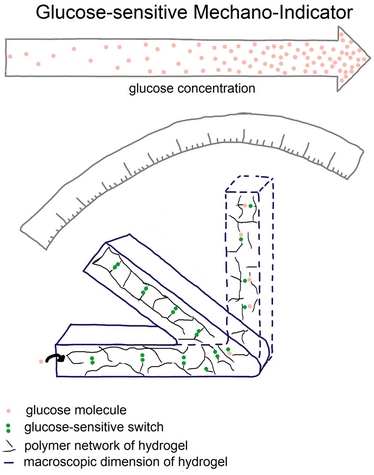Crossref Citations
This article has been cited by the following publications. This list is generated based on data provided by
Crossref.
Agarwal, Tarun
Hann, Sung Yun
Chiesa, Irene
Cui, Haitao
Celikkin, Nehar
Micalizzi, Simone
Barbetta, Andrea
Costantini, Marco
Esworthy, Timothy
Zhang, Lijie Grace
De Maria, Carmelo
and
Maiti, Tapas Kumar
2021.
4D printing in biomedical applications: emerging trends and technologies.
Journal of Materials Chemistry B,
Vol. 9,
Issue. 37,
p.
7608.
Eigel, Dimitri
Werner, Carsten
and
Newland, Ben
2021.
Cryogel biomaterials for neuroscience applications.
Neurochemistry International,
Vol. 147,
Issue. ,
p.
105012.
Li, Yanyan
Wang, Dingqian
Wen, Jie
Yu, Peng
Liu, Jinming
Li, Jianshu
and
Chu, Hetao
2021.
Chemically Grafted Nanozyme Composite Cryogels to Enhance Antibacterial and Biocompatible Performance for Bioliquid Regulation and Adaptive Bacteria Trapping.
ACS Nano,
Vol. 15,
Issue. 12,
p.
19672.
Fu, Chih-Yu
Chuang, Wei-Tsung
and
Hsu, Shan-hui
2021.
A Biodegradable Chitosan-Polyurethane Cryogel with Switchable Shape Memory.
ACS Applied Materials & Interfaces,
Vol. 13,
Issue. 8,
p.
9702.
Kılıç, Hüsna
Ceylan Tuncaboylu, Deniz
Argun, Aslıhan
and
Öztürk Civelek, Dilek
2022.
Design of Biocompatible Multifunctional Hydrogels with Stearyl Methacrylate and Vinylpyrrolidone.
ACS Applied Polymer Materials,
Vol. 4,
Issue. 3,
p.
1717.
Juan, Li-Ting
Lin, Shih-Ho
Wong, Chui-Wei
Jeng, U-Ser
Huang, Chih-Feng
and
Hsu, Shan-hui
2022.
Functionalized Cellulose Nanofibers as Crosslinkers to Produce Chitosan Self-Healing Hydrogel and Shape Memory Cryogel.
ACS Applied Materials & Interfaces,
Vol. 14,
Issue. 32,
p.
36353.
Ford, Michael J.
Ohm, Yunsik
Chin, Keene
and
Majidi, Carmel
2022.
Composites of functional polymers: Toward physical intelligence using flexible and soft materials.
Journal of Materials Research,
Vol. 37,
Issue. 1,
p.
2.
Chen, Di
Yang, Biru
Yang, Chen
Wu, Jingjun
and
Zhao, Qian
2023.
Macroporous Hydrogels Prepared By Ice Templating: Developments And Challenges†.
Chinese Journal of Chemistry,
Vol. 41,
Issue. 22,
p.
3082.
Tan, Guohongfang
Jiang, Fujian
Jia, Tianshuo
Qi, Zhenzhen
Xing, Tieling
Kundu, Subhas C.
and
Lu, Shenzhou
2023.
Glucose-Responsive Silk Fibroin Microneedles for Transdermal Delivery of Insulin.
Biomimetics,
Vol. 8,
Issue. 1,
p.
50.
Behrendt, Florian
Gottschaldt, Michael
and
Schubert, Ulrich S.
2024.
Surface functionalized cryogels – characterization methods, recent progress in preparation and application.
Materials Horizons,
Vol. 11,
Issue. 19,
p.
4600.
Engel, Nora
Hoffmann, Tim
Behrendt, Florian
Liebing, Phil
Weber, Christine
Gottschaldt, Michael
and
Schubert, Ulrich S.
2024.
Cryogels Based on Poly(2-oxazoline)s through Development of Bi- and Trifunctional Cross-Linkers Incorporating End Groups with Adjustable Stability.
Macromolecules,
Vol. 57,
Issue. 6,
p.
2915.
Su, Yi-Ting
Chiu, Hsiao-Chu
and
Su, Cheng-Kuan
2025.
4D-printed shape-programmable [H+]-responsive needles for determination of urea.
Talanta,
Vol. 282,
Issue. ,
p.
126998.
Hoffmann, Tim
Behrendt, Florian
Dietz, Lukas
Holick, Caroline T.
Scharfenberg, Pascal
Gottschaldt, Michael
Sigusch, Bernd W.
and
Schubert, Ulrich S.
2025.
Photoresponsive cryogels based on poly(2-oxazoline)s.
European Polymer Journal,
Vol. 229,
Issue. ,
p.
113845.




